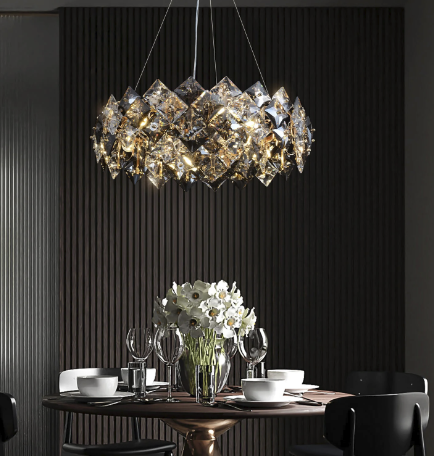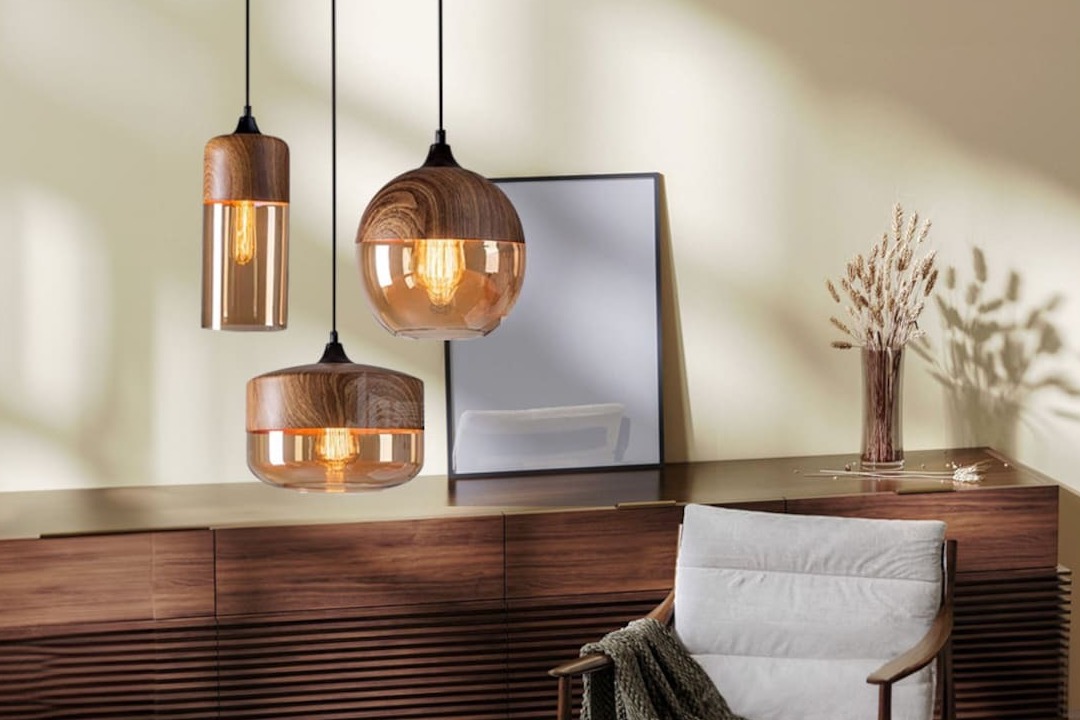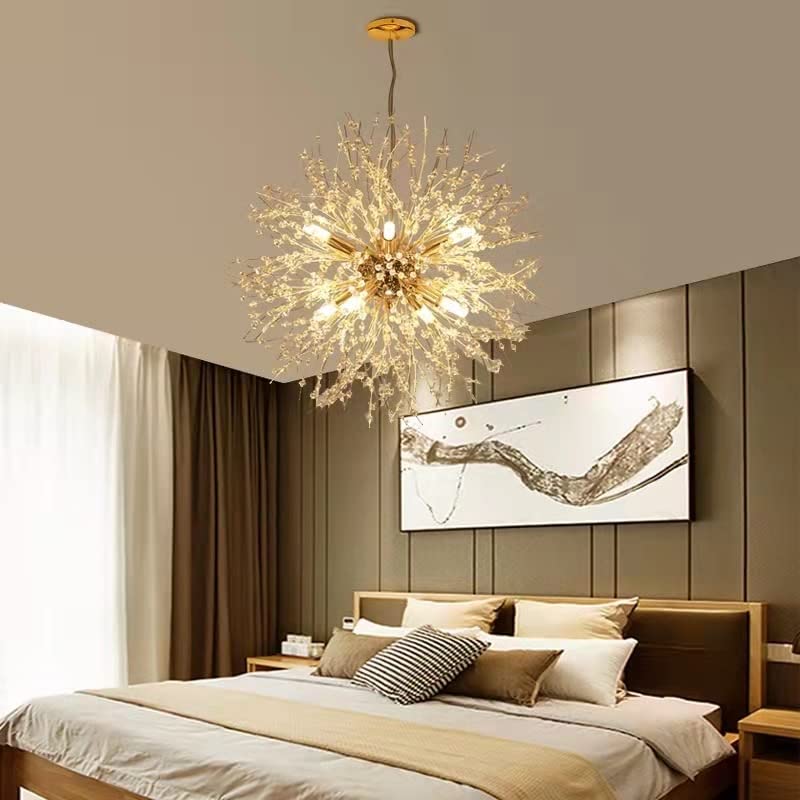The history of crystal chandeliers is a fascinating journey that intertwines art, culture, and technological advancement. Originating in the medieval period, chandeliers were initially simple wooden frames adorned with candles. These early lighting fixtures were primarily functional, serving to illuminate large spaces such as churches and grand halls.
However, as the Renaissance unfolded in the 15th century, the design of chandeliers began to evolve dramatically. Artisans started to experiment with more elaborate forms and materials, leading to the introduction of glass and crystal elements. The use of crystal became particularly prominent in the 17th century, especially in regions like Bohemia and France, where skilled craftsmen began to create intricate designs that reflected light in mesmerizing ways.
This period marked the transition from utilitarian lighting Furniturei to a symbol of opulence and sophistication. By the 18th century, crystal chandeliers had become synonymous with luxury, gracing the ballrooms and dining rooms of Europe’s elite. The famed Baccarat crystal company, established in France in 1764, played a pivotal role in popularizing these exquisite fixtures.
The craftsmanship involved in creating crystal chandeliers reached new heights, with artisans employing techniques such as cutting and polishing to enhance the refractive qualities of glass. The iconic designs of this era often featured elaborate motifs, cascading crystals, and intricate metalwork, making them not just sources of light but also stunning works of art. As the Industrial Revolution progressed in the 19th century, advancements in glass-making technology allowed for mass production, making crystal chandeliers more accessible to the burgeoning middle class.
This democratization of luxury further solidified the chandelier’s status as a staple in both grand estates and modest homes alike.
The Artistry and Craftsmanship Behind Crystal Chandeliers
The artistry and craftsmanship that go into creating a crystal chandelier are nothing short of remarkable. Each piece is a culmination of skilled labor, creativity, and an understanding of light and design. Artisans begin by selecting high-quality materials, often opting for lead crystal due to its superior clarity and brilliance.
The process of crafting a chandelier involves several stages, including cutting, polishing, and assembling various components. Each crystal is meticulously shaped to maximize its ability to refract light, creating a dazzling display when illuminated. The intricate designs often feature a combination of prisms, pendants, and decorative elements that not only enhance the chandelier’s aesthetic appeal but also contribute to its overall functionality.
Moreover, the craftsmanship extends beyond just the crystals themselves; the frame of the chandelier is equally important. Traditionally made from metals such as brass or bronze, these frames are often hand-forged and intricately designed to complement the crystals they hold. Artisans may incorporate various styles ranging from classical to modern, ensuring that each chandelier is unique.
The assembly process requires precision and expertise, as each crystal must be securely attached while maintaining a balanced and harmonious appearance. This level of detail ensures that every chandelier is not merely a lighting fixture but a statement piece that embodies elegance and sophistication.
The Versatility of Crystal Chandeliers in Different Spaces
Crystal chandeliers are remarkably versatile and can enhance a wide range of spaces, from grand ballrooms to cozy dining rooms. Their ability to adapt to various interior styles makes them a popular choice among homeowners and designers alike. In formal settings such as banquet halls or luxury hotels, large crystal chandeliers serve as focal points that draw the eye upward, creating an atmosphere of grandeur and sophistication.
These impressive fixtures can be designed with multiple tiers and an abundance of crystals, allowing them to illuminate expansive areas while adding a touch of elegance. Conversely, crystal chandeliers can also be scaled down for more intimate spaces without sacrificing their charm. In a dining room or foyer, a smaller chandelier can create an inviting ambiance while still showcasing the beauty of crystal craftsmanship.
Designers often play with different styles—such as modern minimalist or vintage-inspired—to ensure that the chandelier complements the overall decor. Additionally, crystal chandeliers can be used in unexpected places like bathrooms or walk-in closets, where they add a touch of luxury to everyday spaces. This versatility allows homeowners to express their personal style while enjoying the timeless beauty that crystal chandeliers bring to any environment.
How to Choose the Right Crystal Chandelier for Your Home
Selecting the right crystal chandelier for your home involves careful consideration of several factors to ensure it harmonizes with your existing decor while fulfilling your lighting needs. First and foremost, it is essential to assess the size of the space where the chandelier will be installed. A large chandelier can overwhelm a small room, while a petite fixture may get lost in a grand entryway.
A general rule of thumb is to add the dimensions of the room (in feet) together and convert that number into inches; this will give you an approximate diameter for your chandelier. Additionally, consider the height at which it will hang—typically, chandeliers should be positioned about 30 inches above a dining table or 7 feet above the floor in other areas. Another critical aspect is the style of your home’s interior design.
Crystal chandeliers come in various styles ranging from traditional to contemporary, each offering unique characteristics that can either complement or clash with your decor. For instance, if your home features classic furnishings with ornate details, a vintage-style chandelier with intricate metalwork may be ideal. On the other hand, if your space leans towards modern minimalism, a sleek chandelier with clean lines and fewer embellishments might be more appropriate.
Color also plays a significant role; clear crystals provide timeless elegance, while colored or tinted crystals can add a playful touch or accentuate specific color schemes within your home.
Maintaining and Cleaning Your Crystal Chandelier
Maintaining and cleaning your crystal chandelier is essential for preserving its beauty and ensuring it continues to shine brightly over time. Dust accumulation can dull the brilliance of crystals and diminish their reflective qualities. To keep your chandelier looking its best, regular dusting is recommended—ideally every few weeks—using a soft feather duster or microfiber cloth.
It’s important to turn off the light fixture before cleaning to avoid any accidents or damage. For more thorough cleaning, especially if there are fingerprints or smudges on the crystals, you can use a mixture of warm water and mild dish soap applied with a soft cloth or sponge. When it comes to deep cleaning your chandelier, it’s advisable to take extra precautions due to its delicate nature.
If possible, remove individual crystals for cleaning; this allows you to reach all surfaces effectively. After washing them gently with soapy water, rinse thoroughly with clean water and dry them completely before reattaching them to avoid water spots. For larger chandeliers that cannot be disassembled easily, consider using a spray-on glass cleaner specifically designed for delicate surfaces—just be sure to cover any electrical components to prevent damage.
Regular maintenance not only enhances the aesthetic appeal but also prolongs the life of your chandelier.
The Impact of Crystal Chandeliers on Interior Design
The Impact of Crystal Chandeliers on Interior Design
Crystal chandeliers have a profound impact on interior design, serving as both functional lighting sources and striking decorative elements that elevate any space. Their ability to reflect light creates an enchanting atmosphere that can transform an ordinary room into an extraordinary one. When strategically placed in entryways or dining areas, these fixtures draw attention upward, making ceilings appear higher and rooms feel more expansive.
Creating a Dynamic Visual Experience
The interplay between light and crystal creates a dynamic visual experience that captivates guests and enhances the overall ambiance of a home. Moreover, crystal chandeliers can serve as focal points around which other design elements are arranged. Their grandeur often inspires color palettes and furniture choices within a room.
Influencing Aesthetic Direction
For instance, a lavish chandelier may lead homeowners to select complementary fabrics or wall colors that echo its elegance. Designers frequently use these fixtures as inspiration for other decorative elements—such as mirrors or artwork—creating cohesive themes throughout a space. In this way, crystal chandeliers not only illuminate but also influence the overall aesthetic direction of interior design projects.
Incorporating Crystal Chandeliers into Modern and Contemporary Spaces
Incorporating crystal chandeliers into modern and contemporary spaces may seem counterintuitive given their traditional associations; however, these fixtures can seamlessly blend into sleek designs when approached thoughtfully. Modern interpretations often feature minimalist designs that emphasize clean lines and geometric shapes while still showcasing the brilliance of crystal elements. For instance, contemporary chandeliers may utilize fewer crystals or incorporate innovative materials like acrylic alongside traditional glass to create a fresh look that resonates with today’s design sensibilities.
Additionally, designers are increasingly experimenting with scale and placement when integrating crystal chandeliers into modern spaces. Oversized fixtures can make bold statements in open-concept living areas or lofts, serving as eye-catching centerpieces that anchor the room’s design. Conversely, smaller chandeliers can add unexpected elegance in spaces like home offices or reading nooks without overwhelming them.
By thoughtfully selecting styles that align with modern aesthetics—such as industrial or Scandinavian influences—homeowners can enjoy the timeless beauty of crystal chandeliers while embracing contemporary design principles.
The Timeless Appeal of Crystal Chandeliers
The timeless appeal of crystal chandeliers lies in their ability to transcend trends while maintaining an air of sophistication that never goes out of style. These exquisite fixtures have adorned homes for centuries and continue to evoke feelings of luxury and elegance today. Their classic designs often feature intricate details that tell stories of craftsmanship passed down through generations, making them not just lighting fixtures but heirlooms that carry history within their sparkling prisms.
Furthermore, crystal chandeliers possess an inherent versatility that allows them to adapt to various design styles over time—from traditional opulence to modern minimalism—ensuring their relevance across different eras. As interior design trends evolve, these fixtures remain steadfast symbols of refinement that can enhance any space’s aesthetic appeal. Whether gracing a grand ballroom or illuminating a cozy dining area, crystal chandeliers continue to captivate hearts and minds with their enchanting beauty and enduring charm.
Their ability to create an atmosphere filled with warmth and elegance ensures they will remain cherished elements in homes for generations to come.





